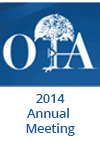
OTA 2014: Supra- vs infrapatellar tibial nailing yields equal clinical/functional results

OTA 2014: Supra- vs infrapatellar tibial nailing yields equal clinical/functional results
Randomized Clinical Trial of Supra- Versus Infrapatellar Tibial Nailing: A Pilot Study
CONFERENCE ACE REPORTS
This ACE Report is a summary of a conference presentation or abstract. The information provided has limited the ability to provide an accurate assessment of the risk of bias or the overall quality. Please interpret the results with caution as trials may be in progress and select results may have been presented.
Synopsis
41 patients with tibial shaft fractures were randomly allocated to undergo surgical fixation with infrapatellar (IP) or suprapatellar (SP) intramedullary nailing. The purpose of this pilot trial was to compare clinical and functional outcomes of the knee between the two approaches up to 12 months post-surgery. IP and SP nailing yielded similar clinical and functional outcomes with respect to disab...
To view the full content, login to your account,
or start your 30-day FREE Trial today.
FREE TRIAL
LOGIN
Forgot Password?
Explore some of our unlocked ACE Reports below!

Learn about our AI Driven
High Impact Search Feature
Our AI driven High Impact metric calculates the impact an article will have by considering both the publishing journal and the content of the article itself. Built using the latest advances in natural language processing, OE High Impact predicts an article’s future number of citations better than impact factor alone.
Continue



 LOGIN
LOGIN

Join the Conversation
Please Login or Join to leave comments.